Garai Art Centre brings the therapeutic effect of art to Kolkata
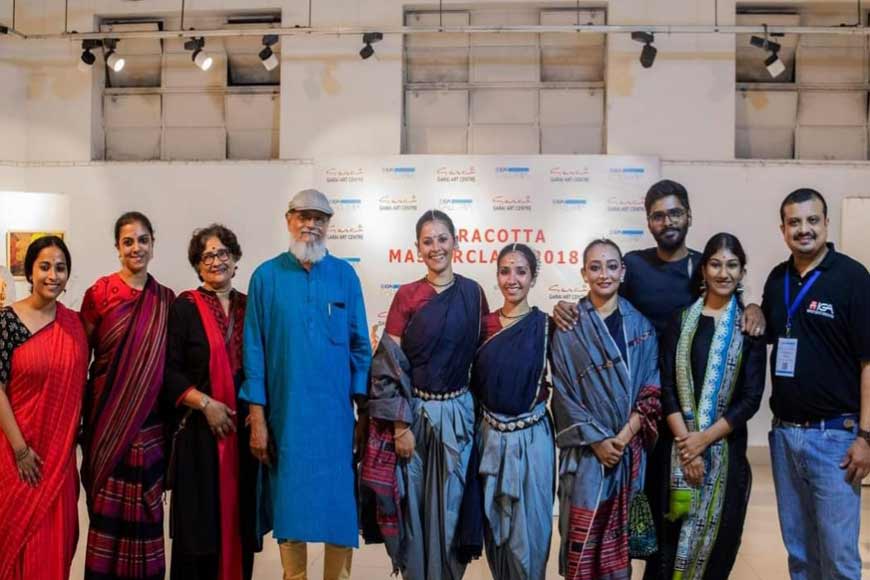
Brahmapur is a neighbouring town of Kolkata, in the southern fringes of the city, and is flanked by Bansdroni to the north and west, Naktala to the east, and Boral to the south. It is like any other common locality except when you saunter into Charunagar, where you encounter an imposing establishment, named Garai Art Centre. A massive terracotta one-piece mural adorns the entrance of the charming home-cum-studio of the Garai family. The mural, sculpted by renowned artist and patriarch of the family, Tarak Garai, renders Krishna in a tribal form. Once you step into the hallowed precinct of this charming center, you will be mesmerized by beautiful artworks, sculptures and paintings adorning the walls and at specific corners of the house aesthetically. After all, this is the house-cum-studio of the two generations of gifted artists from the same family who has been engaged in giving free expression to their creative urges through painting, sculpting, dancing and teaching.
Garai Art Center is a fully family-owned gallery that started its journey way back in 1995. Every artistic production on display in this museum is created by the members of the family and there is no work in the center by any other artist. Octogenarian Tarak Garai is a name to reckon with in the contemporary Indian art scene. He is a highly accomplished senior sculptor and painter who has been a direct disciple of master artist Ramkinkar Baij during his graduation years at Kala Bhavana, Visva Bharati, Santiniketan. His wife, Minakshi Garai is also an alumnus of Kala Bhavana. Their son, Indranil, manages his own architectural sculpting business in Pune and Bangalore, while their daughter, Shashwati Garai Ghosh, is an accomplished Odissi dancer and teacher at the center.
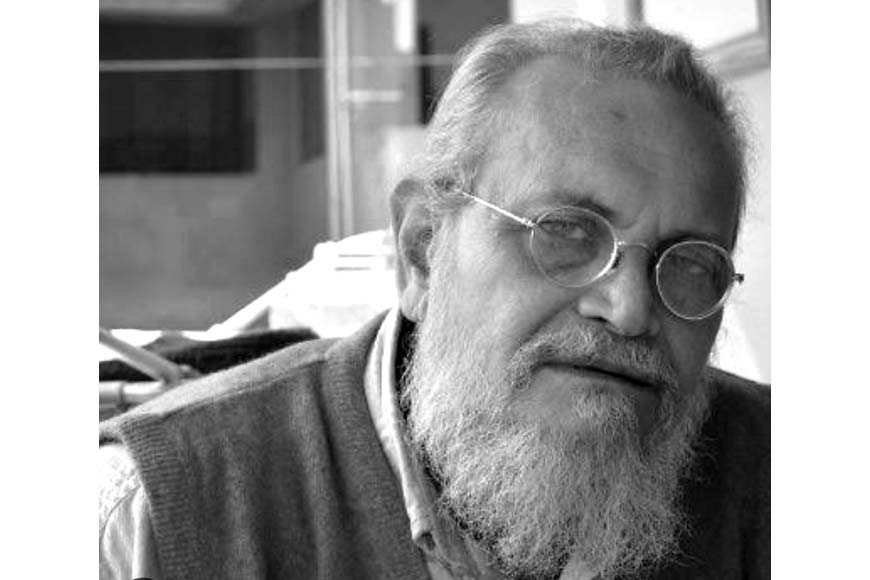
As you step in, chances are you will be greeted with the rhythmic sound of ghungroos ringing in unison, interspersed with specific instructions flying now and then. In the courtyard, you will be greeted by the sight of a group of lithe ladies practicing their dance steps with their mentor Shashwati guiding them and sometimes, joining them to depict what exactly she wants them to do. The courtyard dualizes as Shashwati’s dance studio.
Hailing from Ghidaha, a nondescript village in Birbhum district, Tarak took to art at a very young age. His family lived close to the Ajay River and little Tarak would often make sand and clay idols on the river bank. His deftness at such a tender age mesmerized onlookers who praised him and this gave him the impetus to create. When Tarak was in middle school, his headmaster noticed his flair for art and suggested his father to send him to art school to hone his skills, but his father was skeptical.
The patriarch has transformed the garage into his workshop. Although Tarak Garai has worked extensively with terracotta, wood, and stone, his favourite medium remains bronze. He prefers to cast his own sculptures at his foundry and has done extensive research on various aspects of bronze casting for over 40 years. In his long and eventful career, Tarak Garai was elected member of the General Council, Central Lalit Kala Akademi, New Delhi (1999 – 2002). He had been a jury member for several national and state art exhibitions and has the honour of being the Convener and Director of numerous national and international sculpture and painting camps and workshops. He participated in several national and state-level exhibitions and held 15 solo shows, including those at Jehangir Art Gallery, Bombay (Mumbai), in 1990, Habitat Gallery, New Delhi in 1990, and Genesis Art Gallery, Kolkata in 1993. He has also won awards from the Academy of Fine Arts in 1970 and the All-India Fine Arts and Crafts Society in 1988.
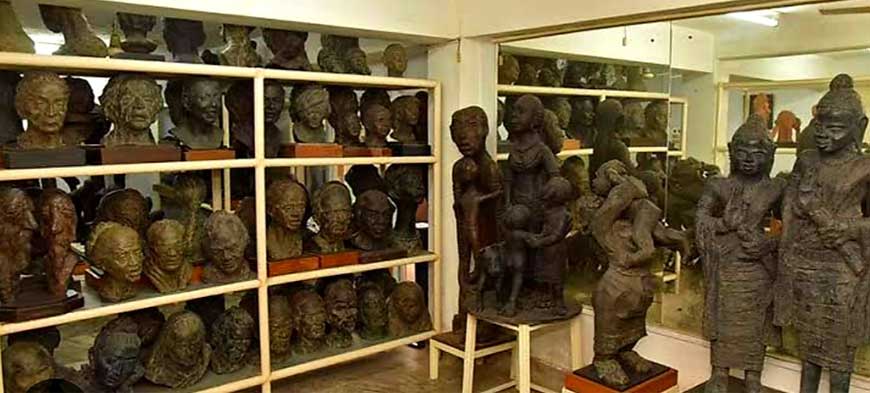
Hailing from Ghidaha, a nondescript village in Birbhum district, Tarak took to art at a very young age. His family lived close to the Ajay River and little Tarak would often make sand and clay idols on the river bank. His deftness at such a tender age mesmerized onlookers who praised him and this gave him the impetus to create. When Tarak was in middle school, his headmaster noticed his flair for art and suggested his father to send him to art school to hone his skills, but his father was skeptical. Finally, after much persuasion by one of his teachers, he agreed to send Tarak to Kala Bhavana, Visva-Bharati, but he had a condition: He would sponsor Tarak’s education till graduation but after that, Tarak would have to be on his own, and earn his living. Tarak’s stint at Kala Bhavana changed his world forever.
Tarak met Minakshi at Kala Bhavana and their love bloomed. Minakshi’s father was a banker and she studied at St. Mary's Convent School and later at South Point School. Following her interest in art and craft, she landed at Kala Bhavana. She was a year junior to Tarak in college and very soon, she was captivated by the young sculptor’s creations. Right from the initial days of training, Tarak’s statuettes were unique and colossal. Minakshi liked the silent brooding artist engaged in his work.
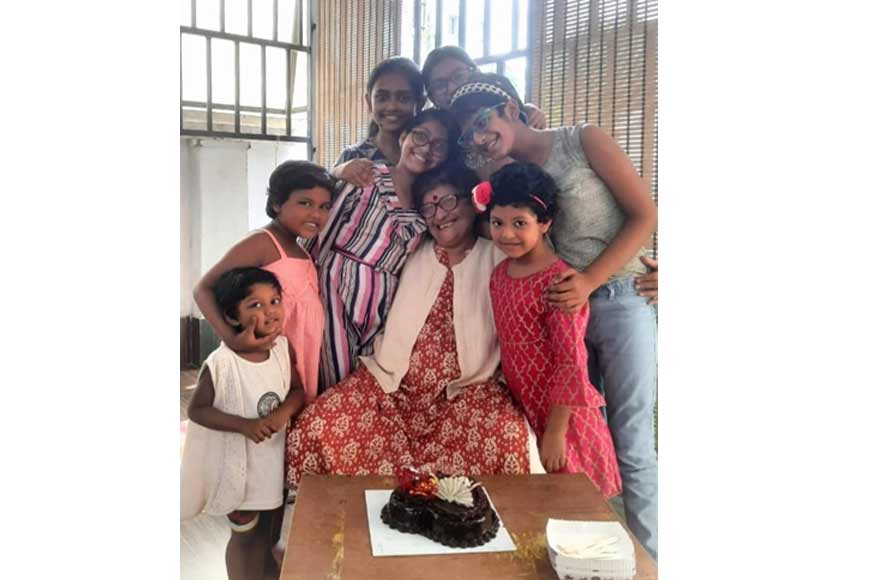
After college, Tarak’s teacher and renowned sculptor, Sarbari Roy Choudhury, advised him to shift to Calcutta instead of going back to his village. He also arranged a job for Tarak at his friend’s interior decoration firm. Meanwhile, Tarak and Minakshi decided to tie the knot but they both met with stiff resistance from their respective families when they declared their intention to marry. However, everything was sorted out after Minakshi joined Julien Day School in Bhowanipore as a teacher while still in college.
Two years after marriage, Tarak felt restless and constrained in his job. He wanted to do something on his own. The couple decided to set up a sari-printing business in Kankulia in South Kolkata. However, their dream project ended abruptly when a major theft in the shop left them penniless. The year was 1976 and they had to start all over from scratch.
Tarak began selling his original paintings to support his family. The couple saved enough to set up an interior decoration firm. The response was very good and within a short time, a steady clientele base formed. But once again, Tarak felt he was missing out on something. He wanted to work in his sphere of interest, sculpture. Meanwhile, in 1984, Lalit Kala Akademi opened its branch in Golpark. This opened a new avenue for Tarak who was now determined to follow his passion. He closed down his business and joined Lalit Kala Akademi. From here started a new phase in his life’s journey. Tarak had envisioned building a studio early in his life that finally materialized in 1992. The vast space provides the freedom to work in a relaxed environment. His dream came true with the setting up of Garai Art Center.
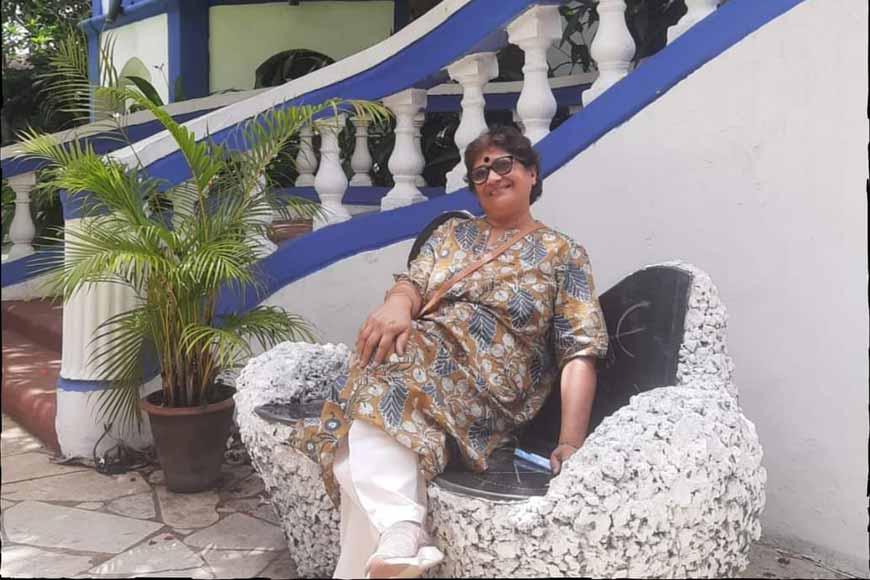
Minakshi continued teaching at Julien Day School till her superannuation in 1981. After Garai Art Center was set up at Charunagar, she established Minakshi Garai Art Circle on the first floor, teaching art to all and sundry who are keen to dabble with colours. Minakshi is aware of the therapeutic effect of art on the mind. She has been teaching housewives to create art from waste materials. These classes help them to enhance their creativity and also find their own occupation. Other than this, there are many options to pick up from including painting, sketching, sculpting et al. These classes help to relax, rejuvenate and take a break from the monotony of life.
Garai Art Center is a fully family-owned gallery that started its journey way back in 1995. Every artistic production on display in this museum is created by the members of the family and there is no work in the center by any other artist. Octogenarian Tarak Garai is a name to reckon with in the contemporary Indian art scene. He is a highly accomplished senior sculptor and painter who has been a direct disciple of master artist Ramkinkar Baij during his graduation years at Kala Bhavana, Visva Bharati, Santiniketan.
Born to two creative souls, it was only natural for the Garai children, Indranil and Shashwati, to take to art like a duck to water. Indranil joined his parents’ alma mater, Kala Bhavana after school. There he met his wife, Payal. She is a potter and the two jointly run their business now. Indranil also makes massive sculptures but his style is very different from his father’s. His commissioned projects for public spaces are in high demand.
Shashwati has a natural flair for art and dabbled in paintings with her mother and sculptures with her father, but she has always been very passionate about dance. Her parents are both liberal and gave her a free hand when she decided to pursue performing arts. Renowned Odissi dancer Sutapa Talukdar took Shashwati under her wings and from then on, there was no looking back for her. She has been mentored by reputed danseuse Sharmila Biswas as well and now she is engaged in incorporating fitness into the classical form and style of dance.
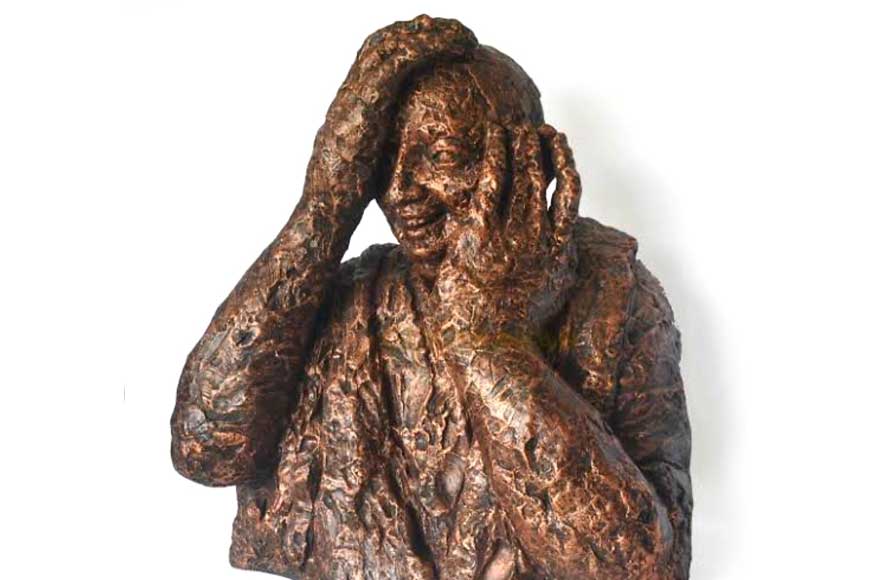
Tarak Garai and Minakshi Garai continue to work diligently and inspire generations of aspiring artists. Despite his 80-plus years, Tarak Garai works for 10-12 hours every day. His uniqueness as a sculptor remains in the fact that he has never made a replica of his uncountable sculptures. His dedication to his art is rare these days but then, sculpting for him is like breathing.











